Hell Hole
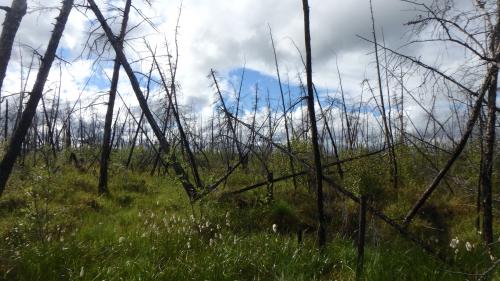
Always up for the challenge
Today I visited a new site across the Kolyma River called the "Hell Hole," which was named by the researchers that have been doing work there for the last few years. The Hell Hole is an area that was affected by a large forest fire around 10-12 years ago and the name for the tough working conditions experienced there. They gave me plenty of opportunities to back out, but I'm always up for a challenge and I love seeing new areas. The Hell Hole name didn't disappoint nor did the descriptions of the area -- it even rained on us for most of the time -- but I wouldn't have had it any other way. I found the place to be surreal, like no area I have ever hiked in before. Hiking through brush so thick that I nearly lost sight of the person five feet in front of me, while trying to navigate the burned woody debris littering the wet, tussock filled ground at my feet, swatting mosquitos away and the light steady rain pelting my rain jacket pretty much sums up the experience. It might sound like hell to some people, but at one point the three of us stopped while Kenzie checked her GPSA Global Positioning System (GPS) is a satellite-based navigation system used to track the location or position of objects on the Earth’s surface., and we all had smiles on our faces, agreeing how awesome it is to actually be studying in such a unique environment. A rainbow even emerged through the wreckage of the high severity burn area.
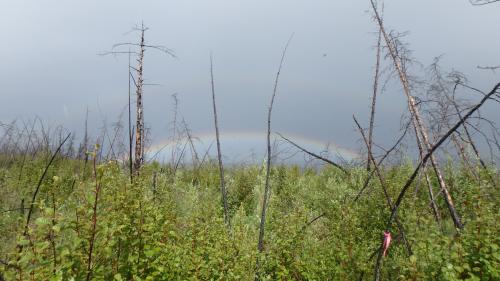
The people
Work on this burn area near Cherskiy has been well studied by a number of researchers visiting the NESS over the years. John Schade and McKenzie Kuhn began working on a new development of the project during the 2015 field season and were nice enough to let me tag along to help take some samples. John is an associate professor at St. Olaf College in the Biology and Environmental Sciences Department, where he has worked for the last 10 years. John has been coming to Cherskiy to study in the Arctic for 8 seasons now. He has worked closely with a National Science Foundation (NSF) funded organization called The Polaris Project, which focuses on bringing undergraduate and graduate students to the Arctic for field study. McKenzie was a Polaris Project Student when she first met John in Russia back in 2014 and they have been working closely together in the field ever since. McKenzie graduated from Wheaton College in 2015 with a degree in Environmental Science and spent last year doing research at Umea University in Sweden on a Fulbright Scholarship. She will be attending a Masters program at the University of Alberta in the Fall. Needless to say, I was in the presence of some amazing people doing amazing things in the name of science.
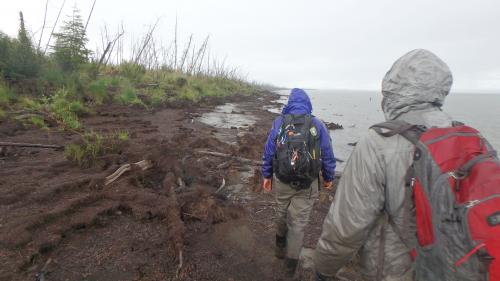
The Study
Like all of the groups here at NESS, John and McKenzie are interested in permafrost and the environmental conditions that affect its stability here in the Arctic. The focus today was to collect soil samples in areas that have been damaged by the forest fire. The idea was to take samples from the high and low severity burn areas for comparison. When a boreal forest like this is severely burned it strips the land of all of its vegetation right down to the moss on the forest floor. The vegetation would have acted as an insulation and the trees would have offered shade to the ground floor, protecting the permafrost layer below. With all of that damaged in the fire, the dark ground absorbs more incoming solar radiation warming up the ground considerably, resulting in a thawing of the permafrost layer.
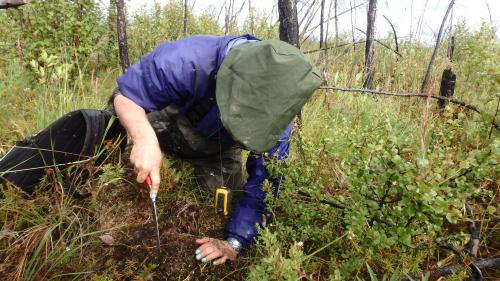
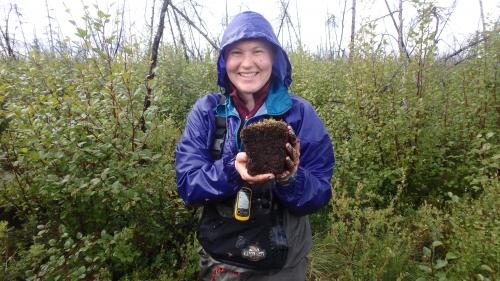
As you can see in the photographs, the area has recovered a fair amount of life in the form of shrubs, grasses, moss, and lichens, but the larch trees of the boreal forest are still scarce in this area. All that is left are the charred remains of their past existence, toppling over as their dead roots are unable to take hold in the depleted soil.
Small ponds have been forming in areas of depression. They are thought to have been formed by melting ice wedges due to the increased warming of the soil after the burn.
Mckenzie took samples of soil from the forest floor and soil from the bottom of the small ponds. All samples will be taken back to the lab for processing to see the connection between the high severity fires and Carbon dioxide (CO2) and methane (CH4) release.
Why do we care?
The overall focus of today’s research is to figure out how the burn areas from forest fires affect CO2 and CH4 release into the atmosphere. Forest fires in the Arctic are happening more often and could continue to get worse due to the expected warming trend of the Earth. If a clear connection can be made between burn areas and an added release of CO2 and CH4 could give more evidence to an acceleration of a warmer climate.
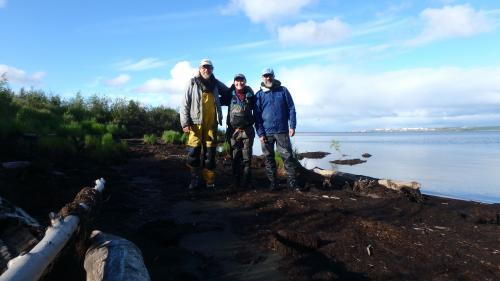
How?
To measure this in the field researchers will use flux chambers to measure the actual amounts of CO2 and CH4 being released at the terrestrial level on the forest floor. Similarly, they will use floating flux chambers on top of the small ponds. In the lab, they will take the samples from the field and put them under an incubation process to mimic aerobic and anaerobic conditions. Under these conditions they will be able to measure the potential release of carbon dioxide and methane.
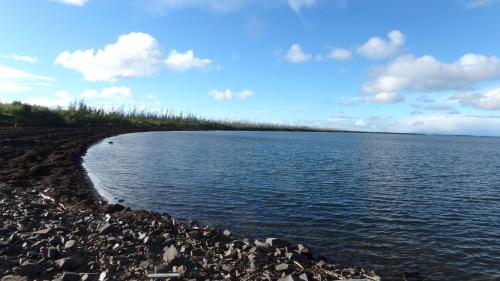
New people equals new opportunities
Over the past week there has been a significant increase in the number of researchers here at the Northeast Science Station (NESS), which has given me this opportunity to experience another one of the many projects going on over here. This means that in the course the upcoming week I will have some new experiences to share so stay tuned.
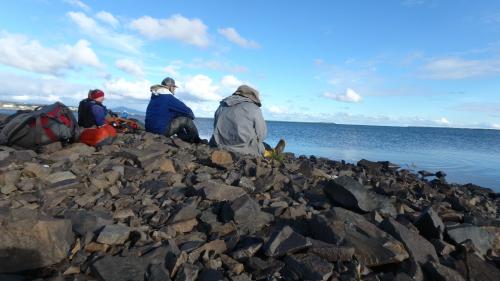


Comments